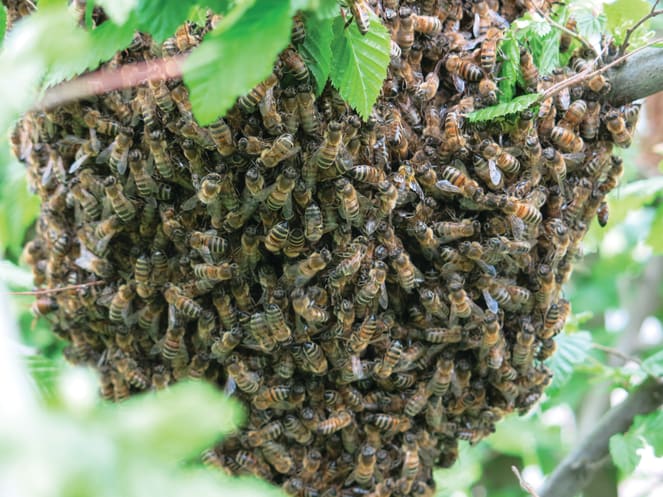There has been a marked increase of interest in bees which are not being kept by beekeepers, sometimes referred to as feral colonies’ or ‘wild colonies’.
The swarming season which is now upon us is perhaps the best time to think about this subject, as so many beekeepers are contacted by members of the public, with requests to remove bees from attics, chimneys, window-sills, cavity walls, ventillation ducts and other places in buildings where a swarm has decided to set up its home. Frequently there is nothing we can do to help the householder, except to reassure them that bees are not aggressive, and that the colony may even die out over the next two or three years, if it has a heavy infestation of varroa mites. Most of the householders nowadays say that they do not want to harm or kill the bees, and many have heard of varroa; but the length of time a colony may remain in one of these inconvenient spots is by no means an easy matter to determine. Urban beekeeping is increasing, with various States in the US changing their legislation to allow this. The loss of bees as well as other pollinators from agricultural landscape areas, and the increasing importance of urban sites for bees has been emphasised in much recent research.
I was very impressed by a project to survey the ‘feral’ bees which the Scot


